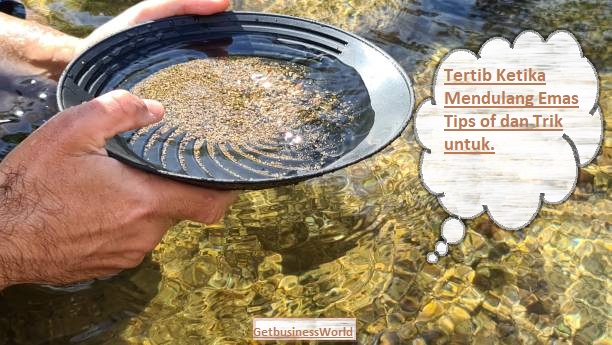Understanding the Proper Procedures When Panning for Gold
Gold panning, a time-honored tradition and a popular hobby, captivates enthusiasts with the promise of shiny rewards tucked away in riverbeds or streams. However, beneath the thrill of the hunt lies the importance of maintaining proper procedures, both for legal compliance and for the environment. This blog post delves into the necessary steps and best practices that anyone interested in gold panning should follow, Tertib Ketika Mendulang Emas ensuring a responsible and rewarding experience.
The Allure of Gold Panning
Gold panning has a rich history, often celebrated in stories of the Gold Rush where hopeful prospectors sought fortune in mining camps. Today, it invites enthusiasts ranging from weekend adventurers to serious treasure hunters. Yet, the excitement of discovering gold should always be balanced with respect for nature and the law.
Understanding Local Regulations
Before you grab your pan and head out, it’s crucial to familiarize yourself with the regulations governing gold panning in your chosen area. Here are key steps to ensure compliance:
- Research Local Laws: Different regions have varying regulations regarding gold panning. Some places may require special permits, while others prohibit panning altogether to protect natural resources. Consult local government websites or visit local offices to understand the specific laws in your area.
- Designated Areas: Many states and countries have specific areas where gold panning is allowed. Look for designated mining or recreational areas where gold panning is permitted. These areas often have established rules aimed at minimizing environmental impact.
- Seasonal Restrictions: Some waterways might be closed for seasonal reasons, like to protect fish spawning. Be sure to check on seasonal restrictions to avoid fines and contribute to environmental preservation.
Equipment for Gold Panning
While gold panning doesn’t require an extensive array of tools, having the right equipment can enhance your experience and increase your chances of success:
- Gold Pan: The primary tool for any panner. Choose a pan that is lightweight yet sturdy. Typically made of metal or plastic, a larger pan can help separate larger amounts of sediment more quickly.
- Classification Tools: Classifying your materials by size using classifiers can help to isolate the heavier gold particles from lighter materials.
- Sifting Device: A small shovel or scoop will be useful for gathering material from the riverbed.
- Trowel and Pick: For accessing sediment in more compact areas, these tools are essential.
- Container: You’ll need a container to hold any gold nuggets or flakes you might find. A simple jar or pouch will suffice.
Proper Panning Techniques
Once equipped and legally compliant, it’s time to explore. Here’s how to effectively pan for gold:
- Select a Good Location: Look for spots where water flow slows, such as behind boulders, bends in the river, or shallow areas. These spots tend to catch gold as it settles due to its higher density.
- Gather Your Material: Use your shovel to collect sediment from the riverbed. Fill your gold pan about halfway with the material, ensuring it has a mix of sand, gravel, and heavier sediments, where the gold is most likely to be found.
- Add Water: Submerge the pan in water to help wash away lighter materials.
- Shake the Pan: Gently shake the pan back and forth to allow the lighter sediments to wash away while keeping the heavier material settled at the bottom.
- Washing Technique: Once you’ve shaken the pan, tilt it slightly to let water and lighter materials flow out, keeping the heavier materials, including gold, inside. Continue this process until you see the concentrated materials in the pan.
- Final Inspection: After the majority of the material has been washed away, inspect the remaining contents. If you spot anything shiny, take the time to carefully extract it.
Environmental Considerations
Gold panning can disrupt river ecosystems if not done responsibly. Here are practices to minimize your impact:
- Avoid Disturbing Wildlife: Stay away from nesting sites or breeding areas for fish and avoid disrupting the habitat.
- Leave No Trace: Carry out any trash you may find, and avoid littering. Ensure that you leave the area as you found it, if not better.
- Use Eco-Friendly Practices: Avoid using chemicals or any practices that might pollute the water system.
Conclusion
Gold panning may appear to be a simple and enjoyable hobby, but it carries with it the responsibilities of respecting both the law and the environment. With correct knowledge and appropriate techniques, not only can participants enjoy the thrill of searching for precious metals, but they can also do so in a way that honors nature and complies with regulations. Happy panning, and may your adventures be fruitful!

